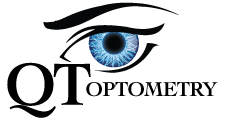What is Glaucoma?
Glaucoma is a very complex eye disease where damages slowly and progressively targets the optic nerve, leading to irreversible vision loss. Glaucoma is the second leading cause of blindness in the US, (first is macular degeneration); it’s also the second leading cause of blindness worldwide (after cataract).
Symptoms of Glaucoma?
Glaucoma usually have no symptoms until very late into the disease process. With no current treatment available, glaucoma is a painless, relentless, and irreversible – to vision loss, and it is very difficult to halt the progression. If left uncontrolled, glaucoma first destroys the peripheral vision, and will eventually lead to blindness.
Types of Glaucoma:
There are two major categories of glaucoma and each has their own variant:
- Open angle glaucoma:
- Primary open angle glaucoma
- Normal tension glaucoma
- Pigmentary glaucoma
- Pseudoexfoliation glaucoma
- Secondary glaucoma
- Congenital glaucoma
- Narrow angle glaucoma:
- Acute angle closure glaucoma
- Chronic angle closure glaucoma
- Neovascular glaucoma
Risk Factors:
African-Americans, Hispanics, and Latinos have a higher predilection for open angle glaucoma when compared to Non-Hispanic whites in the US.
Glaucoma Treatment:
Current glaucoma care and treatment are aimed at lowering the intra-ocular pressure. In other word, glaucoma can be controlled, so that damages can be greatly minimized, however, there is currently no cure for glaucoma. Treatment of glaucoma can include eye drops/medications, lasers, or surgical interventions, depending on the severity of the glaucoma.


